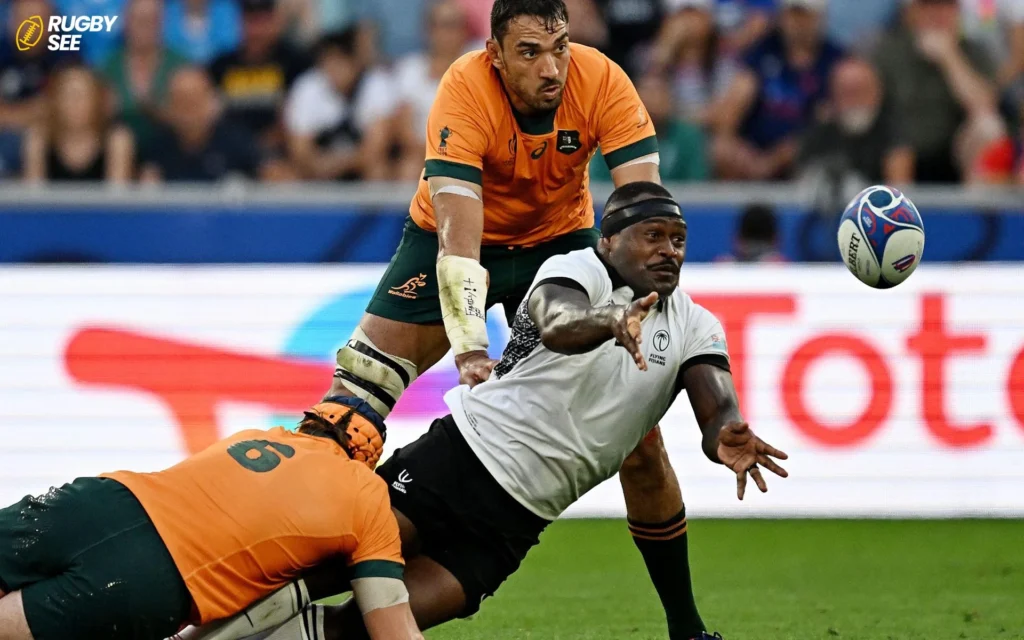Rugby is a sport that requires a combination of strength, speed, agility and endurance from its players. As competition in the sport increases, rugby players and coaches are constantly looking for effective training methods to increase performance on the field. One of these methods that has gained popularity is powerlifting. This article from Rugbysee explores the relationship between powerlifting and rugby, discussing its benefits for rugby players and considerations to take into account.
Understanding Powerlifting and Its Relevance to Rugby
Powerlifting is a strength sport that focuses on three main lifts: the squat, bench press, and deadlift. These exercises are designed to build maximal strength by lifting heavy weights for low repetitions. The primary goal in powerlifting is to increase the amount of weight one can lift in these three exercises.
The relevance of powerlifting to rugby lies in the development of explosive strength and power, qualities that are essential for rugby players. The physical demands of rugby include tackling, scrumming, and sprinting, all of which require significant strength and power.
Benefits of Powerlifting for Rugby Players
Increased Muscular Strength and Power: Powerlifting routines develop significant muscular strength, particularly in the lower body and core, which are crucial for rugby players. Stronger legs and a more robust core enhance a player’s ability to drive through tackles, maintain stability during contact, and execute powerful sprints and if you want to know about Rugby and Healthness read Why is Rugby Good for Your Mental Health.
Improved Bone Density and Joint Stability: The intense nature of the lifts performed in powerlifting helps in increasing bone density and joint stability. This is particularly beneficial in rugby, where the risk of injuries from physical impacts and tackles is high.
Enhanced Mental Toughness: Powerlifting requires a high level of mental discipline and toughness, qualities that are directly transferable to the rugby field. The focus and determination needed to lift heavy weights can help players manage pressure situations during games.

Integrating Powerlifting into Rugby Training
Integrating powerlifting into a rugby training program should be done thoughtfully to balance the development of strength with other physical attributes like agility and endurance. Coaches and trainers often modify traditional powerlifting programs to suit the specific needs of rugby:
Periodization: Incorporating periodization into training, which involves varying the intensity and volume of workouts over specific periods, helps in achieving peak performance during the rugby season and reduces the risk of overtraining.
Customization of Exercises: While traditional powerlifting focuses on three main lifts, rugby players may benefit from variations of these lifts and additional accessory exercises that mimic rugby-specific movements or address individual needs.
Recovery and Injury Prevention: Given the intensity of powerlifting and rugby, adequate recovery is essential. Implementing recovery protocols, such as adequate rest, proper nutrition, and mobility work, is critical to prevent injuries and ensure continual progress.
Considerations and Potential Drawbacks
While the benefits of powerlifting for rugby players are clear, there are several considerations that must be addressed:
Risk of Injury: Powerlifting involves high-intensity lifts that, if performed incorrectly or without proper supervision, can lead to injuries. It is crucial for rugby players to receive proper coaching on technique to minimize this risk.
Balancing Skill Development: Rugby players need a well-rounded training program that includes skills training, cardiovascular conditioning, and flexibility work. Focusing too heavily on powerlifting can lead to neglect of these other essential components.
Managing Fatigue: The physical demands of both powerlifting and rugby can lead to fatigue, which might impair a player’s performance on the field if not managed correctly.

Practical Implementation Tips for Rugby Players
To effectively integrate powerlifting into rugby training, players and coaches can follow these practical tips:
Start with Fundamentals: Before diving into heavy lifting, rugby players should focus on mastering the correct form and technique of the basic powerlifting movements. This foundation will not only improve effectiveness but also reduce the risk of injuries.
Incorporate Mobility Work: Powerlifting can sometimes reduce flexibility if not complemented with mobility exercises. Rugby players should include dynamic stretches, yoga, or Pilates in their routine to maintain and enhance their range of motion.
Use Submaximal Loads for Training: Instead of constantly striving for maximal lifts, rugby players can work with submaximal loads to build strength without excessive strain. This approach allows for more frequent training sessions without significant fatigue, aligning better with the needs of rugby.
Monitor and Manage Training Load: It’s crucial for players to monitor their overall training load to avoid overtraining. Utilizing tools like session RPE (rate of perceived exertion) can help manage the intensity and ensure that training remains within safe limits.

Tailor Programs to the Rugby Calendar: Powerlifting workouts should be tailored to the rugby season. Off-season periods can focus more on building strength and power, while in-season training should emphasize maintenance of strength and reduction of injury risk.
Collaboration Between Strength Coaches and Rugby Coaches
To maximize the benefits of integrating powerlifting into rugby training, a close collaboration between strength and conditioning coaches and rugby coaches is essential. This synergy ensures that training programs are aligned with the tactical and physical demands of rugby matches. Coaches should work together to create a holistic training plan that addresses the specific needs of the team and individual players.
Case Studies and Success Stories
Several high-profile rugby teams and players have successfully integrated powerlifting into their training regimes. These success stories often highlight significant improvements in player performance, showcasing increased tackle-breaking ability, faster sprints, and overall enhanced physical presence on the field. Analyzing these case studies can provide valuable insights and best practices that can be adapted to other teams and players and if you want to know about Populariry of Rugby Union read Why Do People Love Rugby Union? Unraveling the Passion Behind the Game.
Continual Education and Learning
As both rugby and strength training evolve, continual learning and adaptation are key. Rugby players and coaches should stay informed about the latest research in sports science and strength training to continually refine and improve their training practices. Attending workshops, certification courses, and conferences can help keep their knowledge up to date.
In conclusion, powerlifting can be a highly beneficial addition to a rugby player’s training regimen, provided it is implemented with a clear understanding of the sport’s demands and individual player needs. The strength, power, and mental toughness gained from powerlifting can significantly enhance a rugby player’s performance. However, it is crucial to maintain a balanced approach that incorporates all facets of athletic development to ensure the overall effectiveness and safety of the training program. By judiciously integrating powerlifting with other training elements, rugby players can achieve greater strength and power, ultimately leading to improved performance on the rugby field.










